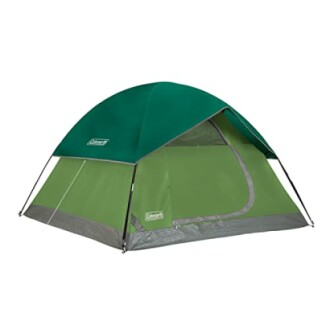
How to Choose the Best Rooftop Tent for Family Camping
Key Takeaways
- Consider the tent's size and occupancy for family needs.
- Look for weather resistance and durability features.
- Easy setup is crucial for convenience during camping trips.
- Evaluate additional features like ventilation, storage, and connectivity.
- Match the tent to your vehicle for optimal fit and safety.
Family camping trips can be an exciting adventure, but choosing the right rooftop tent is essential for a comfortable experience. In this guide, we'll explore the factors that make a rooftop tent ideal for family camping, helping you make an informed decision.
Why Choose a Rooftop Tent?
Rooftop tents have become increasingly popular among camping enthusiasts, and for good reason. They offer a unique camping solution that elevates your experience—literally! By setting up your sleeping quarters on top of your vehicle, you can enjoy better views, improved ventilation, and increased security from wildlife.
Benefits of Rooftop Tents
- Easy access without the hassle of ground setup.
- Keep you off the ground, away from moisture, bugs, and critters.
- Great for small, uneven, or rugged camping sites.
Factors to Consider when Choosing a Rooftop Tent
To find the perfect rooftop tent for your family, consider the following key factors:
Size and Occupancy
Size is perhaps the most crucial factor. Family tents should accommodate everyone comfortably. Many rooftop tents are available for 2-3 people, while others can fit larger families.
| Tent Model | Occupancy | Dimensions (L x W x H) |
|---|---|---|
| Naturnest Rooftop Tent Hard Shell | 2-3 People | 83" x 51" x 59" |
| Coleman Sundome Camping Tent | 4 People | 23.23" x 6.5" (packed) |
Weather Resistance and Durability
The durability of your rooftop tent will determine how well it performs in various weather conditions. Look for the following:
- Waterproofing: Ensure the materials have reliable waterproof ratings.
- UV Protection: UV-resistant fabrics will prolong the life of your tent.
- Wind Resistance: A sturdy frame can withstand strong winds and storms.
Easy Setup
Setting up your tent quickly can significantly enhance your camping experience. Opt for tents that are designed for easy installation, such as those with:
- Automated opening mechanisms.
- Quick-release straps.
- Clear instruction manuals.
Additional Features
Modern rooftop tents come with various extra features that can elevate your camping experience:
- Ventilation: Look for tents with mesh windows and good airflow.
- Storage Solutions: Tent pockets for gear organization.
- Connectivity: Some tents provide built-in electrical ports for charging devices.
Recommended Rooftop Tents for Families
Here are two great rooftop tents that are perfect for family camping trips:
Naturnest Rooftop Tent Hard Shell
This rooftop tent is designed for 2-3 people, making it an excellent choice for small families. Built with high-quality materials, it is weather-resistant and easy to set up within minutes.
See ProductColeman Sundome Camping Tent
A spacious tent for 4 people, the Coleman Sundome is easy to set up and features impressive waterproof capabilities, perfect for any camping environment.
Explore NowConclusion
Finding the perfect rooftop tent for family camping takes careful consideration of several factors such as size, weather resistance, ease of setup, and extra features. By keeping these tips in mind and choosing a quality product, you can ensure that your family camping trips are comfortable and enjoyable.


